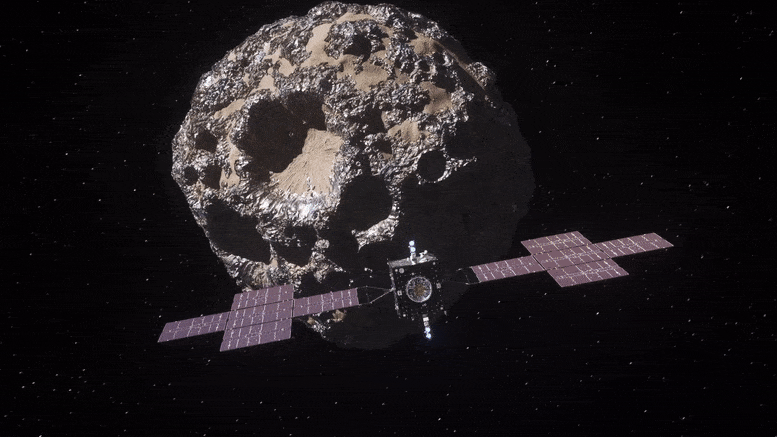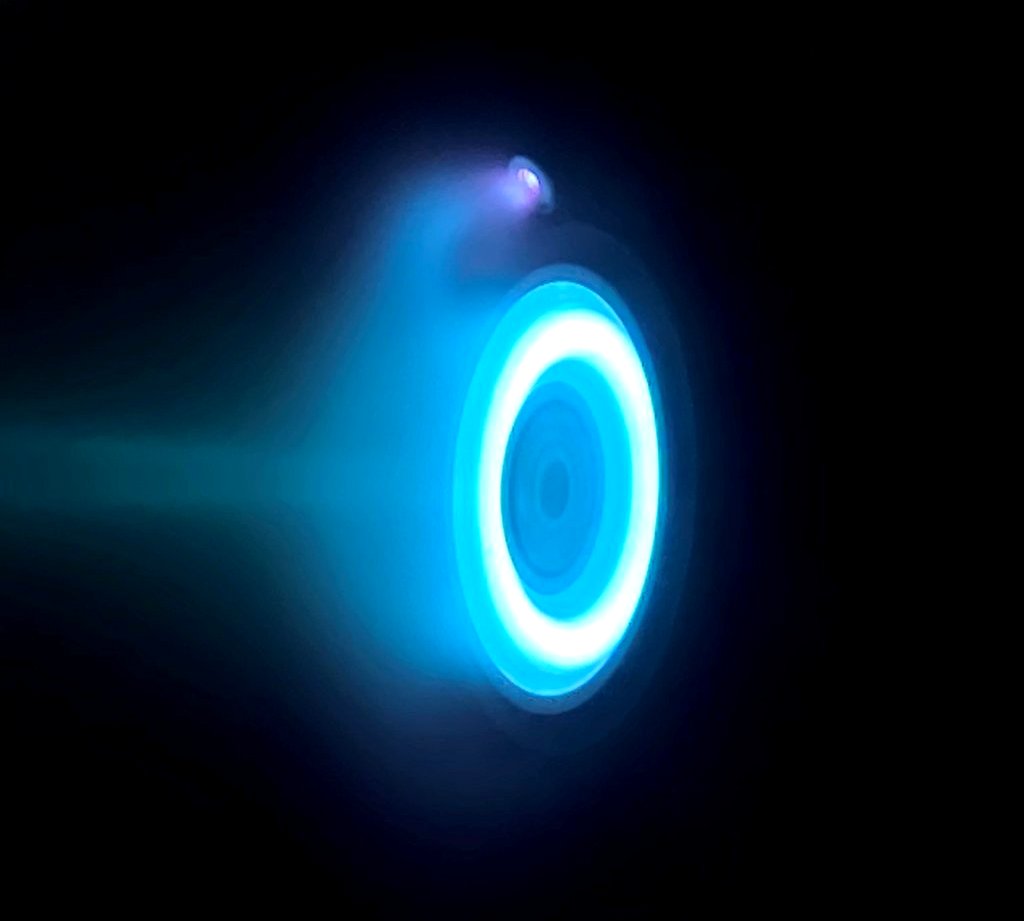Propelling Psyche Onward
Psyche spacecraft, artist concept (credit: NASA/JPL/Caltech/ASU)
According to NASA, the science and discovery mission Psyche passed its six-month checkup in top shape after firing its futuristic thruster. Like a spaceship from a SciFi novel, the probe's electric propulsion system produces a blue glow captured on video and beamed back to the Jet Propulsion Laboratory (JPL) in Pasadena, that manages the craft. The exploratory probe was launched from Florida in 2023 from the Kennedy Space Center carried atop a Falcon Heavy, SpaceX rocket. The new propulsion system propels it faster and farther into deep space with the craft now beyond the orbit of Mars. In 2029, it will go into orbit around a strange metal world discovered in the 1852 by an Italian astronomer and named after the Greek Goddess of the Soul, Psyche.

Designed by engineers at CalTech and the JPL, the electric engine is driving the orbiter onward to the asteroid belt between Mars and Jupiter. The thruster produces a blast of charged atoms (ions) of xenon gas, that emits a glowing blue behind the craft. It is a component of Psyche’s propulsion system powered by solar energy. Because it is so efficient, the engine could operate nearly nonstop for years without running out of fuel. The ionized xenon produces a gentle push that increases the probe's speed with every mile it moves in the resistance-free vacuum of outer space. With no atmospheric drag to hold it back, Psyche will eventually reach speeds of up to 124,000 miles/hour (200,000 kilometers/hour) as it glides towards its final destination.


The orbiter is now more than 190 million miles (300 million kilometers) away and moving at the speed of 23 miles/second (37 kilometers/second) or approximately 84,000 mph (135,000 kph). When the spacecraft arrives at the metal-rich Psyche it will make scientific measurements from orbit taking measurements and detailed photography. The data should help mission investigators better understand how rocky planets form with their metallic cores, including the Earth. NASA has evidence the asteroid, about 173 miles (280 kilometers) across, may be the core of a planetesimal, the starting block of a planet. Psyche may also be the remnant of a planet taking form during the earliest days of the solar system's formation 4.5 billion years ago. If so, it may have had all but its core blown away in a collision with another planetesimal. Some visionaries even believe Psyche's metallic resources could be worth $10,000 quadrillion dollars if the asteroid were ever to be mined.metallic resources might be worth some $10,000 quadrillionmetallic resources might be worth some $10,000 quadrillionmetallic resources might be worth some $10,000 quadrillion
SciFi novelists could gain considerable source material for a new book or movie from whatever Psyche discoveries after it arrives at the metal world. WHB